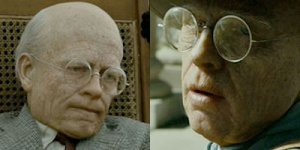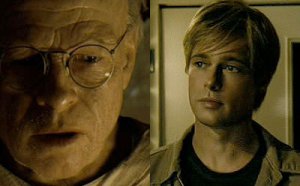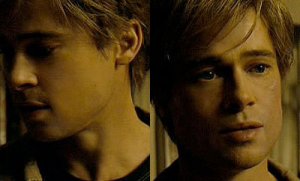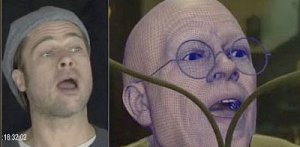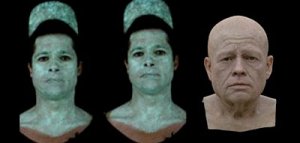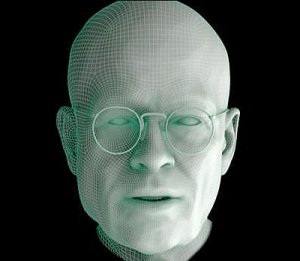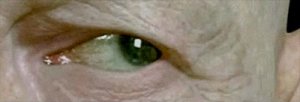Crossing the “Uncanny Valley”
Tuesday, December 29th, 2009 • Horrorthon Posts
[UPDATE: I added “behind the scenes” images from Digital Domain; scroll down.]
I haven’t seen Avatar yet, so I can’t comment, but I’ve noticed that everyone’s giving James Cameron’s team credit for “finally” solving the problem of creating expressive digital faces that look photorealistic and genuine, without being creepy…since nobody else has done this.
Really? As with all digital effects, the audience only thinks to comment on them when they’re aware of them…which is when people start pointing out how “obvious” they “always” are. In reality, most of the time, viewers have absolutely no idea that they’re being fooled, unless there’s no other way to explain what they’re seeing. My Dad turned to me during Gollum’s first appearance in The Two Towers and whispered, “Is that a digital effect?” Point being that it couldn’t possibly have been makeup or a puppet or anything else, so he deduced what it was; deprived of the opportunity for deductive logic, people totally miss what’s in front of them. (Everybody knows there aren’t any ten-foot-tall blue people with cat faces, so, ergo, “it’s digital.”) I’m not claiming to be any different, either: I know enough about digital images and animation to know that I can’t trust my own eyes at all.
To illustrate my point, here are some frames from David Fincher’s sublime The Curious Case of Benjamin Button, in which the actual Brad Pitt doesn’t appear for forty minutes, and the audience isn’t complaining about any “uncanny valley,” because they’re completely, blissfully unaware that they’re seeing millions of pixels. Check out the (imaginary) old and young Pitt (and some “behind the scenes” pictures of the process Digital Domain used):
